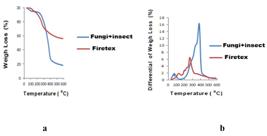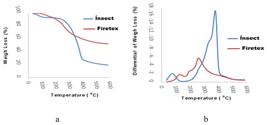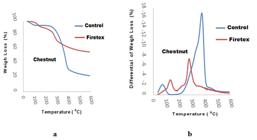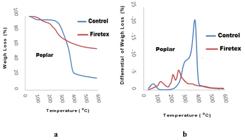Abstract
In this study, four different wood species walnut (Juglans regia L.), chestnut (Castanea sativa Mill.), Poplar (Populus nigra), scotch pine (Pinus sylvestris L.) were chosen and test samples were prepared according to TS 2470 principles. Especially the pine wood by taking the structure (with fungus, fungus/insect, insect), flawless wood structure is compared with the flawed wood structure. The impregnation process was carried out according to ASTM D 1413 -76 principles. Effects of the chemical characteristics of the determined Stone Water (Firetex) on the thermal decomposition properties of wood (burning degrees, degradation temperature points and residue amount) were determined with TGA (thermogravimetric analysis). According to the results of the experiment; the highest retention value was found in poplar (23.56%) and the lowest retention (12.79%) in chestnut was determined. Amount of residue; 60.84% of the highest on scotch pine wood with fungus and 56.70% of the lowest value was determined on poplar wood. Thermal deterioration was determined between 226.41-405.04 oC on wood .
Keywords:
stone water; walnut; chestnut; poplar; scots pine; thermal properties

 Thumbnail
Thumbnail
 Thumbnail
Thumbnail
 Thumbnail
Thumbnail
 Thumbnail
Thumbnail
 Thumbnail
Thumbnail
 Thumbnail
Thumbnail
 Thumbnail
Thumbnail






